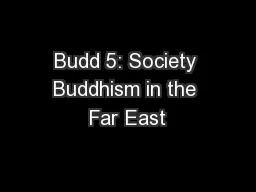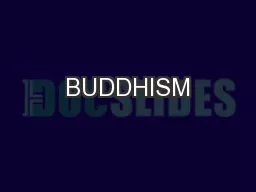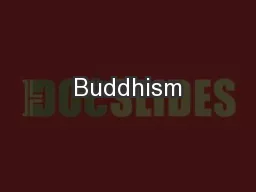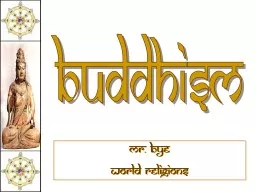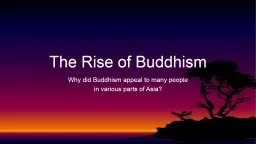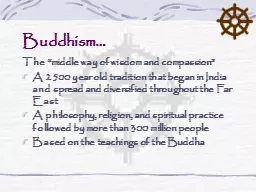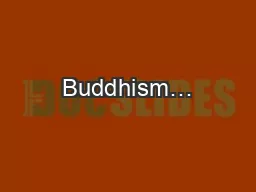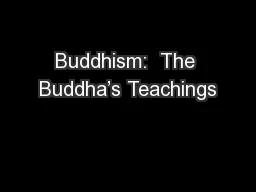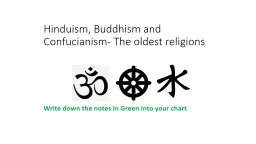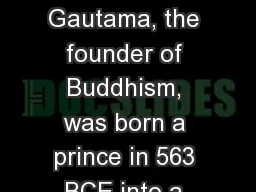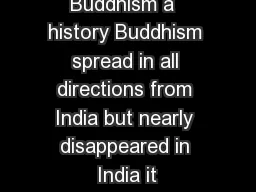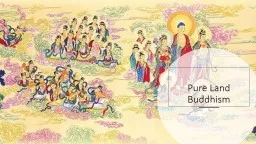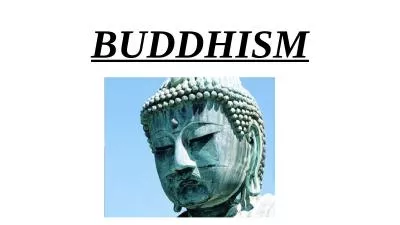PPT-Budd 5: Society Buddhism in the Far East
Author : phoebe-click | Published Date : 2019-01-22
Zen Buddhism Pure Land Buddhism b Buddhism in the West The spread of Buddhism to the West Buddhism in popular culture Western inculturation Prep deadlinetoday Satori
Presentation Embed Code
Download Presentation
Download Presentation The PPT/PDF document "Budd 5: Society Buddhism in the Far East" is the property of its rightful owner. Permission is granted to download and print the materials on this website for personal, non-commercial use only, and to display it on your personal computer provided you do not modify the materials and that you retain all copyright notices contained in the materials. By downloading content from our website, you accept the terms of this agreement.
Budd 5: Society Buddhism in the Far East: Transcript
Download Rules Of Document
"Budd 5: Society Buddhism in the Far East"The content belongs to its owner. You may download and print it for personal use, without modification, and keep all copyright notices. By downloading, you agree to these terms.
Related Documents

